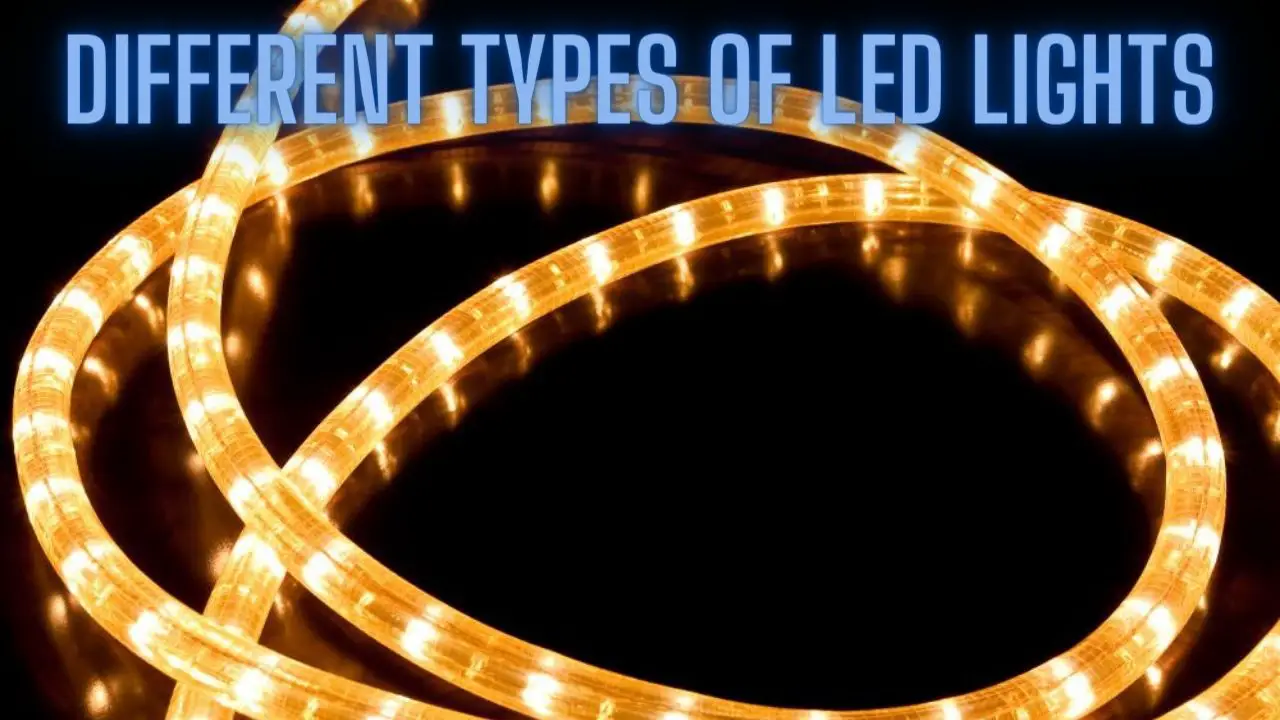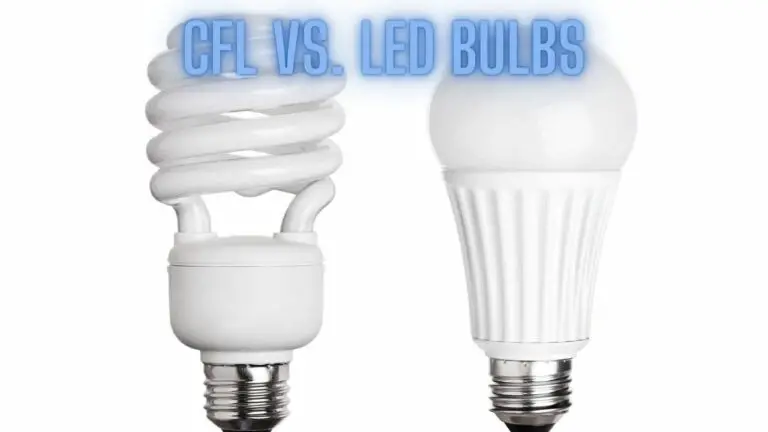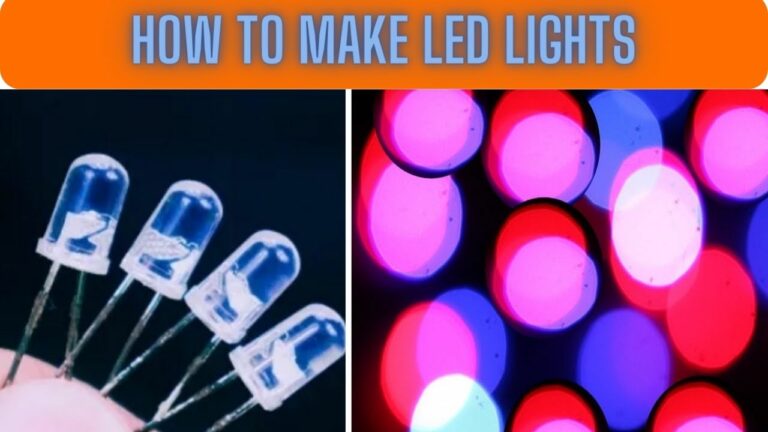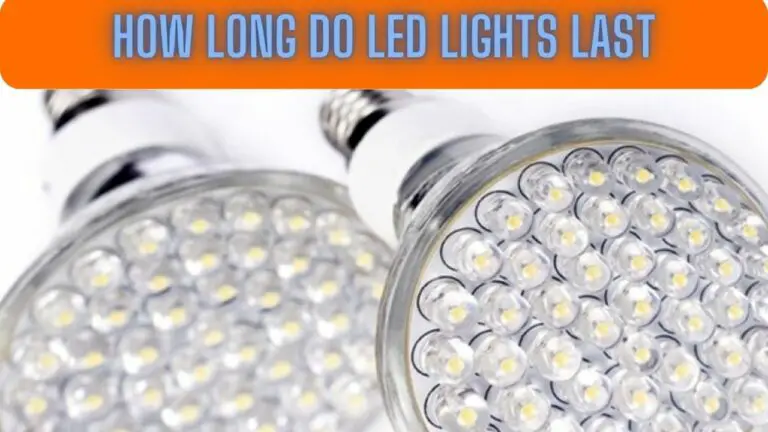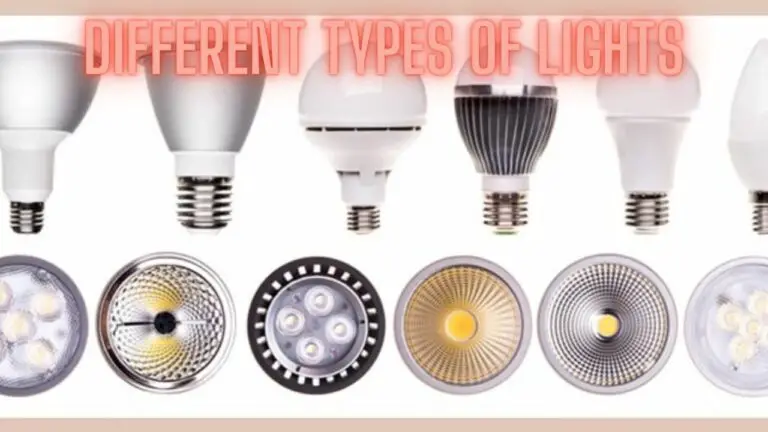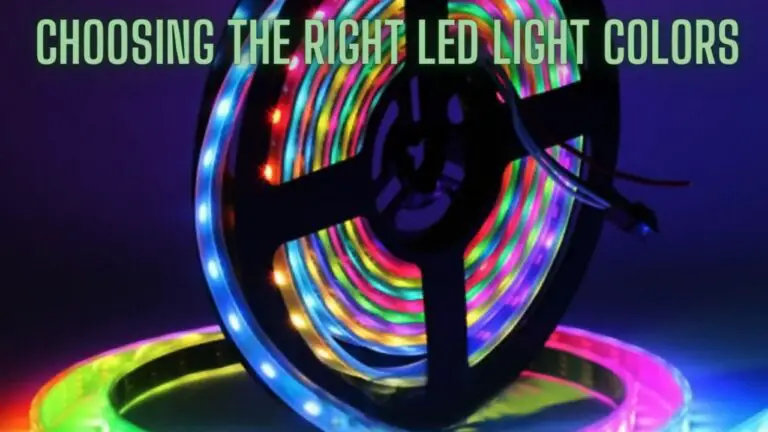Different Types of LED Lights: A Comprehensive Guide
Introduction
Welcome to this comprehensive guide on LED lighting. In recent years, Light-Emitting Diode (LED) technology has transformed the lighting industry, offering unparalleled efficiency, longevity, and versatility compared to traditional lighting sources. This introduction sets the stage for exploring the myriad aspects of LED lighting and its impact on various applications.
- Purpose of the Guide:
- The purpose of this guide is to provide a thorough understanding of LED lighting, covering its fundamental principles, different types of LED lights available, considerations for selecting the right LED lights, their wide-ranging applications, installation and maintenance tips, and future trends shaping the industry. Whether you’re a homeowner, business owner, lighting professional, or simply curious about LED technology, this guide aims to equip you with the knowledge needed to make informed decisions and maximize the benefits of LED lighting solutions.
- Importance of LED Lighting:
- LED lighting has become synonymous with energy efficiency, sustainability, and innovation. By consuming significantly less energy than traditional incandescent and fluorescent lighting, LEDs help reduce electricity costs and carbon emissions, contributing to environmental conservation and combating climate change. Additionally, their long lifespan and durability translate to reduced maintenance and replacement costs, further enhancing their economic and environmental value.
- Beyond efficiency, LED lighting offers unparalleled versatility in terms of design possibilities, color options, and controllability. From residential and commercial lighting to automotive, outdoor, and specialty applications, LEDs have revolutionized the way we illuminate our surroundings, enabling dynamic lighting effects, improved visibility, and enhanced aesthetics.
- Moreover, ongoing advancements in LED technology, such as smart lighting systems, tunable white lighting, and human-centric lighting designs, are reshaping the future of lighting, offering unprecedented levels of customization, connectivity, and user experience. As such, understanding and embracing LED lighting is not just about adopting a new technology but embracing a transformative paradigm shift towards more sustainable, efficient, and user-centric lighting solutions.
This guide serves as your comprehensive companion on the journey through the world of LED lighting, empowering you to navigate the complexities, seize the opportunities, and illuminate your spaces with confidence and efficiency.
LED Basics
Understanding the fundamentals of Light-Emitting Diode (LED) technology is essential for appreciating its numerous advantages and applications. This section provides an overview of the basic principles behind LEDs and highlights their key features.
- Definition of LED (Light-Emitting Diode):
- LEDs are semiconductor devices that emit light when an electric current passes through them. They are composed of semiconductor materials such as gallium arsenide, gallium phosphide, or indium gallium nitride, which are doped to create p-n junctions.
- When a voltage is applied across the p-n junction, electrons and holes recombine within the semiconductor material, releasing energy in the form of photons. This process, known as electroluminescence, produces the light emitted by LEDs.
- How LEDs Work:
- Unlike traditional incandescent bulbs, which rely on heating a filament to produce light, LEDs generate light through a solid-state process. This makes them more energy-efficient and durable.
- The color of light emitted by an LED depends on the bandgap energy of the semiconductor material used. Different semiconductor materials produce different colors of light, ranging from ultraviolet (UV) to infrared (IR).
- LEDs are directional light sources, meaning they emit light in a specific direction. This directional nature allows for more efficient use of light and enables precise control over lighting effects.
- Advantages of LED Lighting:
- Energy Efficiency: LEDs are highly energy-efficient, converting a larger percentage of electrical energy into visible light compared to traditional lighting sources. This results in lower electricity bills and reduced carbon emissions.
- Longevity: LEDs have an exceptionally long lifespan, typically lasting tens of thousands of hours before needing replacement. This longevity reduces maintenance costs and downtime associated with lamp replacements.
- Durability: LEDs are solid-state devices, making them more resistant to shock, vibration, and environmental factors compared to fragile incandescent or fluorescent bulbs.
- Instant On: LEDs reach full brightness instantly upon being switched on, without any warm-up time. This makes them suitable for applications where immediate illumination is required.
- Color Options: LEDs are available in a wide range of colors, allowing for customizable lighting solutions to suit various preferences and applications.
Understanding these basic principles of LED technology lays the foundation for exploring the diverse range of LED lighting options available and their applications across different sectors. Whether for residential, commercial, industrial, or specialty lighting, LEDs offer unmatched efficiency, longevity, and versatility, making them the preferred choice for modern lighting solutions.
Types of LED Lights
LED technology has led to the development of various types of lighting fixtures catering to diverse applications and preferences. Here’s an overview of some common types of LED lights:
- LED Bulbs:
- LED bulbs are designed to replace traditional incandescent or compact fluorescent bulbs in standard light fixtures. They come in a variety of shapes, including A-shape, globe, candle, and reflector, to suit different lighting needs.
- LED Tubes:
- LED tubes are retrofit replacements for fluorescent tubes in existing lighting fixtures. They offer energy-efficient lighting with longer lifespans and are available in both plug-and-play and direct-wire configurations.
- LED Panels:
- LED panels consist of flat, thin panels containing an array of LED chips. They provide uniform illumination and are commonly used for ambient lighting in offices, schools, hospitals, and commercial spaces.
- LED Strips/Flexible LED Lighting:
- LED strips, also known as LED tape lights, are flexible strips with adhesive backing that contain multiple LED chips. They are versatile and can be easily installed in curved or irregular spaces, making them ideal for decorative and accent lighting.
- LED Spotlights:
- LED spotlights produce directional beams of light, making them suitable for highlighting specific objects or areas. They are commonly used in track lighting systems, recessed ceiling fixtures, and landscape lighting.
- LED Floodlights:
- LED floodlights emit broad beams of light, covering large areas with bright illumination. They are often used for outdoor security lighting, architectural accent lighting, and sports field lighting.
- LED Downlights:
- LED downlights, also known as recessed lights or can lights, are installed into ceilings to provide ambient or task lighting. They offer a sleek, minimalist appearance and can be dimmable for adjustable lighting levels.
- LED Track Lighting:
- LED track lighting systems consist of tracks with adjustable fixtures that can be repositioned to direct light where needed. They are commonly used in retail stores, galleries, and museums for spotlighting merchandise or artwork.
- LED High Bays/Low Bays:
- LED high bay lights are designed for illuminating large indoor spaces with high ceilings, such as warehouses, factories, and gymnasiums. LED low bay lights are used in areas with lower ceiling heights, such as retail stores and workshops.
- LED Street Lights:
- LED street lights offer energy-efficient and long-lasting illumination for roadways, highways, and outdoor public spaces. They provide improved visibility and safety while reducing energy consumption and maintenance costs.
- LED Grow Lights:
- LED grow lights are specifically designed to support plant growth by providing the necessary wavelengths of light for photosynthesis. They are used in indoor gardening, hydroponic systems, and commercial greenhouse operations.
- LED Decorative Lights:
- LED decorative lights come in various shapes, sizes, and colors, offering creative lighting solutions for holidays, events, parties, and home décor.
- LED Task Lights:
- LED task lights provide focused illumination for specific tasks, such as reading, studying, crafting, or working at a desk. They are often adjustable and can be mounted or freestanding for convenience.
- LED Emergency Lights:
- LED emergency lights are equipped with backup batteries and are designed to provide illumination during power outages or emergencies. They are essential for ensuring safety and visibility in public buildings, workplaces, and residential settings.
These are just some examples of the diverse range of LED lighting options available, each designed to meet specific lighting requirements and preferences. From general illumination to decorative accents, LEDs offer unparalleled efficiency, longevity, and versatility, making them the go-to choice for modern lighting solutions.
Considerations for Choosing LED Lights
When choosing LED lights for your specific application, several factors should be taken into consideration to ensure optimal performance, efficiency, and satisfaction. Here are some key considerations to keep in mind:
- Color Temperature:
- Color temperature refers to the warmth or coolness of the light emitted by an LED bulb, measured in Kelvin (K). Consider the desired ambiance and mood of the space when selecting the color temperature:
- Warm White (2700K-3000K): Creates a cozy and inviting atmosphere, ideal for residential and hospitality settings.
- Neutral White (3500K-4000K): Offers a balance between warm and cool tones, suitable for retail and office environments.
- Cool White (5000K-6500K): Provides a bright, energetic light similar to daylight, suitable for task lighting and outdoor applications.
- Color temperature refers to the warmth or coolness of the light emitted by an LED bulb, measured in Kelvin (K). Consider the desired ambiance and mood of the space when selecting the color temperature:
- Color Rendering Index (CRI):
- The Color Rendering Index measures the ability of a light source to accurately render colors compared to natural sunlight. Choose LEDs with a high CRI (typically 80 or above) for applications where color accuracy is important, such as retail displays, artwork illumination, and makeup application.
- Lumen Output:
- Lumen output indicates the brightness of the LED light, with higher lumens corresponding to brighter illumination. Consider the desired brightness level based on the specific application:
- For general lighting, aim for sufficient lumen output to adequately illuminate the space without causing glare or discomfort.
- Task lighting may require higher lumen output to ensure sufficient visibility for performing detailed tasks.
- Decorative lighting may benefit from adjustable brightness levels to create the desired ambiance and visual impact.
- Lumen output indicates the brightness of the LED light, with higher lumens corresponding to brighter illumination. Consider the desired brightness level based on the specific application:
- Beam Angle:
- The beam angle determines the spread of light emitted by an LED fixture. Choose the appropriate beam angle based on the lighting task and the desired coverage area:
- Narrow beam angles (20-30 degrees) are suitable for spotlighting and accent lighting, providing focused illumination.
- Wide beam angles (more than 60 degrees) are ideal for general lighting and ambient illumination, covering larger areas with uniform light distribution.
- The beam angle determines the spread of light emitted by an LED fixture. Choose the appropriate beam angle based on the lighting task and the desired coverage area:
- Dimming Capability:
- Consider whether dimming capability is desired for the LED lights, as this allows for adjustable brightness levels to accommodate different activities, moods, and preferences. Ensure compatibility with dimmer switches and choose LED bulbs labeled as “dimmable” for optimal performance.
- Energy Efficiency:
- LED lights are known for their energy efficiency, consuming significantly less power than traditional lighting sources. Look for ENERGY STAR certified LED products or those with high efficacy ratings to maximize energy savings and reduce electricity costs over time.
- Lifespan:
- LED lights have a long lifespan compared to traditional bulbs, but the actual lifespan may vary depending on usage patterns, operating conditions, and product quality. Choose LED lights from reputable manufacturers with proven reliability and warranties to ensure longevity and performance consistency.
- Cost:
- Consider the initial cost as well as the long-term cost savings when choosing LED lights. While LED bulbs may have a higher upfront cost compared to traditional bulbs, their energy efficiency, longevity, and reduced maintenance requirements often result in significant savings over their lifespan.
By carefully considering these factors when choosing LED lights, you can select the right products to meet your specific lighting needs, preferences, and budget, while maximizing energy efficiency, performance, and satisfaction.
Applications of LED Lighting
LED lighting finds diverse applications across various sectors and environments, offering numerous benefits in terms of energy efficiency, longevity, durability, and versatility. Here are some common applications of LED lighting:
- Residential Lighting:
- LED lighting is widely used in homes for general lighting, task lighting, accent lighting, and decorative purposes. LED bulbs, strips, and fixtures offer energy-efficient illumination, customizable colors, and long lifespans, enhancing the ambiance and functionality of residential spaces.
- Commercial Lighting:
- In commercial settings such as offices, retail stores, restaurants, and hotels, LED lighting provides bright, uniform illumination with minimal energy consumption. LED panels, downlights, track lights, and spotlights are commonly used for ambient lighting, accentuating merchandise, and creating inviting atmospheres.
- Industrial Lighting:
- LED lighting is ideal for industrial environments such as warehouses, factories, and manufacturing facilities, where bright, reliable illumination is essential for safety and productivity. LED high bay lights, low bay lights, and floodlights offer efficient lighting solutions for large indoor spaces with high ceilings.
- Outdoor Lighting:
- LED lighting is well-suited for outdoor applications, including street lighting, parking lots, pathways, and landscape lighting. LED street lights provide energy-efficient illumination for roadways, while LED floodlights and wall packs offer security lighting for outdoor areas, enhancing visibility and safety.
- Automotive Lighting:
- In the automotive industry, LED lighting is increasingly used for headlights, taillights, brake lights, and interior lighting in vehicles. LED headlights offer improved visibility, longer lifespans, and customizable designs, while LED taillights and brake lights enhance safety and aesthetics.
- Horticultural Lighting:
- LED lighting plays a crucial role in horticulture and indoor farming, providing tailored light spectra for plant growth and development. LED grow lights offer energy-efficient and customizable lighting solutions for hydroponic systems, vertical farms, and commercial greenhouses, promoting higher yields and healthier crops.
- Specialty Lighting:
- LED lighting is utilized in specialty applications such as stage lighting, museum lighting, aquarium lighting, and medical lighting. LED fixtures offer precise control over color, intensity, and directionality, meeting the unique requirements of each application while minimizing heat and UV emissions.
- Emergency Lighting:
- LED lighting is essential for emergency lighting systems in buildings, facilities, and vehicles. LED exit signs, emergency lights, and backup lighting fixtures provide reliable illumination during power outages or emergency situations, ensuring safe egress and visibility for occupants.
- Architectural Lighting:
- LED lighting is integral to architectural lighting design, accentuating building facades, structures, and landmarks with dynamic illumination effects. LED architectural lighting fixtures, such as linear lights, wall washers, and façade lights, enhance the aesthetics and visual impact of architectural spaces.
- Entertainment and Hospitality:
- In entertainment venues, hotels, restaurants, and bars, LED lighting creates immersive environments and enhances guest experiences. LED fixtures with color-changing capabilities, dynamic effects, and remote control options add excitement and ambiance to entertainment spaces, hospitality settings, and themed events.
These are just a few examples of the broad range of applications where LED lighting is utilized, demonstrating its versatility, efficiency, and adaptability to diverse lighting needs and environments. From residential to commercial, industrial, outdoor, and specialty applications, LED lighting continues to revolutionize the way we illuminate our world, offering innovative solutions for energy-efficient, sustainable, and visually captivating lighting designs.
Installation and Maintenance Tips for LED Lights
Proper installation and maintenance are essential for maximizing the performance, longevity, and efficiency of LED lights. Here are some installation and maintenance tips to ensure optimal operation of LED lighting fixtures:
- Installation Tips:
- Follow Manufacturer’s Guidelines: Always refer to the manufacturer’s installation instructions and guidelines specific to the LED lighting fixture being installed. This ensures proper handling, mounting, and wiring procedures are followed.
- Use Compatible Fixtures and Components: Ensure that the LED lights are compatible with existing fixtures, sockets, and dimmer switches. Using incompatible components can lead to operational issues, flickering, or reduced lifespan.
- Ensure Proper Wiring: Ensure that electrical wiring is installed correctly and securely to prevent loose connections, short circuits, or electrical hazards. If unsure, consult a qualified electrician for installation.
- Provide Adequate Ventilation: LED fixtures generate heat during operation, so ensure that there is adequate ventilation around the fixture to dissipate heat effectively. Avoid installing LED lights in enclosed spaces or areas with poor ventilation, as this can affect performance and lifespan.
- Positioning and Orientation: Consider the positioning and orientation of LED fixtures to achieve the desired lighting effect and coverage. Aim directional fixtures such as spotlights or floodlights appropriately to illuminate specific areas or objects effectively.
- Consider Environmental Factors: Consider environmental factors such as moisture, dust, and temperature fluctuations when installing LED lights in outdoor or harsh environments. Choose fixtures with appropriate IP (Ingress Protection) ratings for protection against water and dust ingress.
- Maintenance Tips:
- Regular Cleaning: Periodically clean LED fixtures and lenses to remove dust, dirt, and debris that can accumulate over time and affect light output and performance. Use a soft, dry cloth or a mild detergent solution for cleaning, and avoid abrasive cleaners or solvents that can damage the fixture.
- Inspect for Damage: Regularly inspect LED fixtures for signs of damage, wear, or corrosion, such as cracked lenses, loose connections, or discoloration. Address any issues promptly to prevent further damage or safety hazards.
- Check for Proper Operation: Periodically check LED lights for proper operation, including brightness, color consistency, and flickering. Test dimmable fixtures with compatible dimmer switches to ensure smooth dimming functionality.
- Replace Faulty Components: If any LED bulbs, drivers, or other components fail or malfunction, replace them promptly with compatible replacements from the manufacturer. Avoid mixing different types or brands of LED components, as this can lead to compatibility issues.
- Update Firmware and Software: For LED fixtures with integrated controls or smart features, periodically update firmware or software to ensure compatibility with the latest technologies and optimize performance.
- Schedule Regular Maintenance: Establish a regular maintenance schedule for inspecting, cleaning, and servicing LED lighting fixtures, especially in commercial or industrial settings where fixtures are subject to heavy use and wear.
By following these installation and maintenance tips, you can ensure the reliable operation, longevity, and efficiency of LED lighting fixtures, maximizing their performance and minimizing the need for costly repairs or replacements over time.
Future Trends and Innovations in LED Lighting
The future of LED lighting is filled with exciting possibilities as technological advancements continue to drive innovation and shape the industry. Here are some emerging trends and innovations that are expected to revolutionize LED lighting in the coming years:
- Smart LED Lighting Systems:
- Smart LED lighting systems integrate advanced controls, sensors, and connectivity features to enable remote operation, automation, and customization of lighting settings. These systems can be controlled via smartphone apps, voice commands, or centralized management platforms, allowing users to adjust brightness, color, and scheduling to suit their preferences and needs.
- Human-Centric Lighting (HCL):
- Human-centric lighting focuses on optimizing lighting environments to support human health, well-being, and performance. HCL systems adjust light intensity, color temperature, and spectral distribution throughout the day to mimic natural sunlight patterns and align with the body’s circadian rhythm. This can improve sleep quality, mood, productivity, and overall comfort in indoor spaces.
- Advanced Controls and Connectivity:
- LED lighting systems are becoming increasingly interconnected and interoperable, enabling seamless integration with other building systems such as HVAC, security, and occupancy sensors. Advanced controls and connectivity features allow for more sophisticated lighting scenarios, energy management strategies, and data-driven insights for optimizing building performance and user experience.
- Sustainable and Eco-Friendly LED Technologies:
- Sustainable LED lighting solutions focus on reducing environmental impact and promoting energy efficiency, recyclability, and resource conservation. Innovations in materials, manufacturing processes, and product design are driving the development of eco-friendly LED products with reduced carbon footprint, lower energy consumption, and enhanced recyclability.
- Miniaturization and Integration:
- LED lighting technology is becoming smaller, more compact, and more integrated into architectural elements, fixtures, and wearable devices. Miniaturized LEDs, micro-LEDs, and flexible OLEDs enable new form factors, designs, and applications, ranging from ultra-thin displays and signage to embedded lighting in furniture, textiles, and automotive interiors.
- Biophilic Design and Nature-Inspired Lighting:
- Biophilic design principles emphasize connecting indoor spaces with nature to improve health, well-being, and productivity. Nature-inspired LED lighting designs incorporate organic shapes, patterns, and colors that evoke natural elements such as sunlight, water, vegetation, and sky, fostering a sense of connection to the outdoors and creating more harmonious and inviting environments.
- Energy Harvesting and Self-Powered Lighting:
- Energy harvesting technologies enable LED lighting fixtures to generate power from ambient sources such as solar, kinetic, or thermal energy. Self-powered LED lighting systems reduce reliance on external power sources, enhance resilience, and support off-grid or remote applications where traditional power infrastructure is unavailable or impractical.
- Adaptive and Responsive Lighting:
- Adaptive LED lighting systems dynamically adjust lighting parameters in response to changing environmental conditions, user preferences, or activity levels. Sensors, artificial intelligence (AI), and machine learning algorithms enable proactive adaptation of lighting settings to optimize comfort, safety, and energy efficiency in real-time.
These future trends and innovations in LED lighting are poised to transform the way we illuminate our world, offering smarter, more sustainable, and more personalized lighting solutions that enhance quality of life, foster creativity, and support environmental stewardship. As LED technology continues to evolve, the possibilities for innovative lighting applications and experiences are limitless, driving progress towards a brighter, more connected future.
FAQS
What is the main advantage of using LED bulbs over traditional incandescent bulbs?
- The main advantage of using LED bulbs is their energy efficiency. LED bulbs consume significantly less energy and have a longer lifespan, making them cost-effective and environmentally friendly.
Can LED tube lights be used to replace fluorescent tubes in existing fixtures?
- Yes, LED tube lights are designed to replace traditional fluorescent tubes in existing fixtures. However, some modifications or rewiring may be required to accommodate LED tubes.
What is the difference between LED spotlights and floodlights?
- LED spotlights produce a narrow, focused beam of light, whereas LED floodlights emit a wide, broad beam. Spotlights are used for accent lighting, while floodlights are ideal for illuminating large areas.
Are LED strips suitable for outdoor use?
- Yes, there are outdoor-rated LED strips available that can withstand exposure to the elements. These strips are commonly used for architectural lighting, landscape lighting, and decorative lighting on outdoor structures.
Do LED panels provide even and glare-free lighting?
- Yes, LED panels are designed to provide uniform and diffused lighting, reducing glare and ensuring even illumination. They are often used in office and commercial settings for these reasons.
What are the advantages of using LED high bay and low bay lights in industrial settings?
- LED high bay and low bay lights offer high-intensity and energy-efficient lighting solutions for high-ceiling environments like warehouses and factories. They provide cost savings and improved visibility.
Can LED track lights be adjusted to focus on specific objects or areas?
- Yes, LED track lights typically have adjustable heads that can be directed to illuminate specific objects, merchandise, or areas, making them versatile for retail and display applications.
Are LED downlights suitable for use in damp or wet locations, such as bathrooms or outdoor soffits?
- Some LED downlights are designed for damp or wet locations and come with appropriate ratings. It’s important to choose the right type of LED downlight for the specific application and environment.
What are LED grow lights used for, and how do they benefit indoor gardening?
- LED grow lights provide the specific spectrum of light required for plant growth indoors. They are used by indoor gardeners and commercial growers to promote healthy and productive plant growth year-round.
How do LED street lights contribute to energy savings in municipalities and cities?
- LED street lights are energy-efficient and have a longer lifespan than traditional streetlights. By switching to LED street lights, municipalities and cities can reduce energy consumption and maintenance costs while improving visibility and safety on streets and highways.
Conclusion
Understanding the various types of LED lights and their applications allows consumers and businesses to make informed choices when selecting lighting solutions. LEDs continue to evolve, offering energy-efficient, long-lasting, and environmentally friendly lighting options for a wide range of needs.

